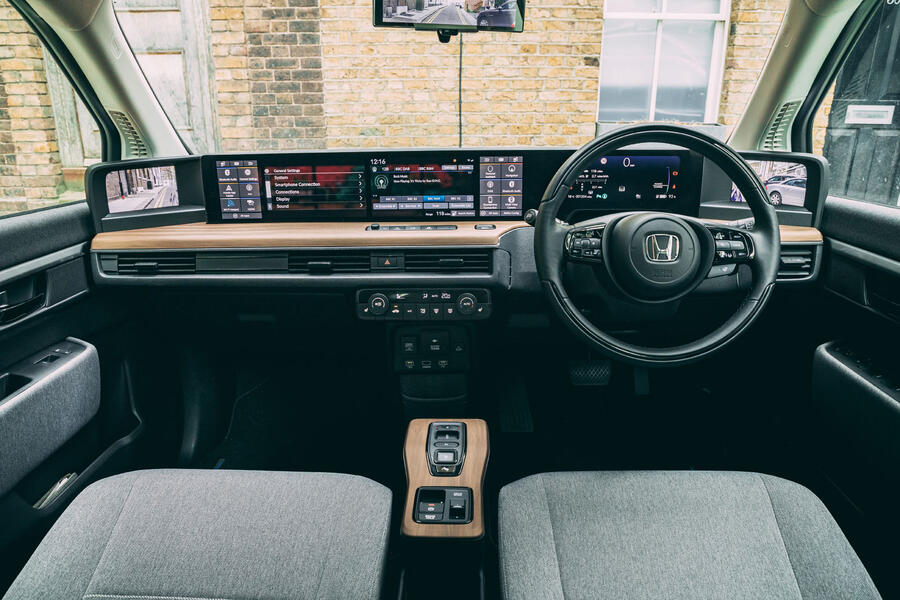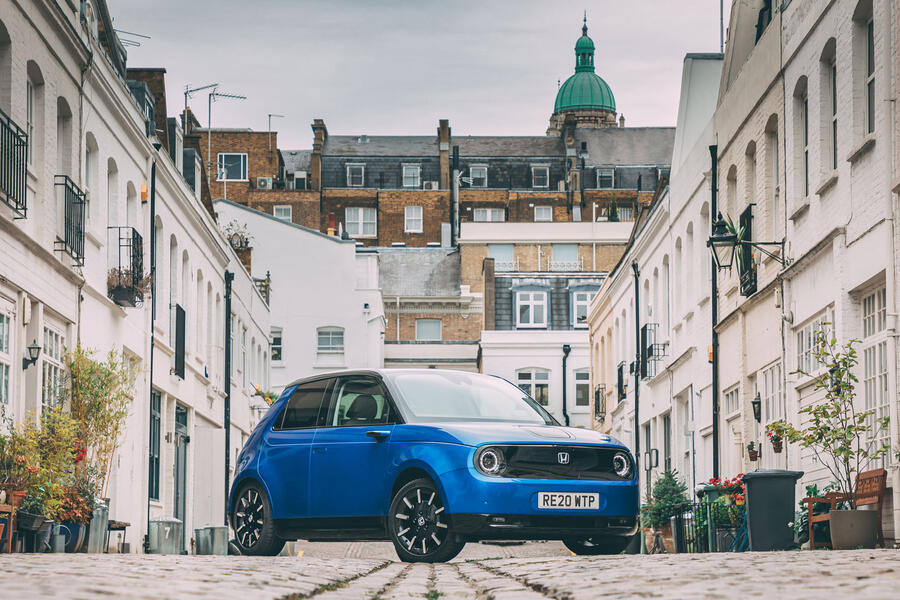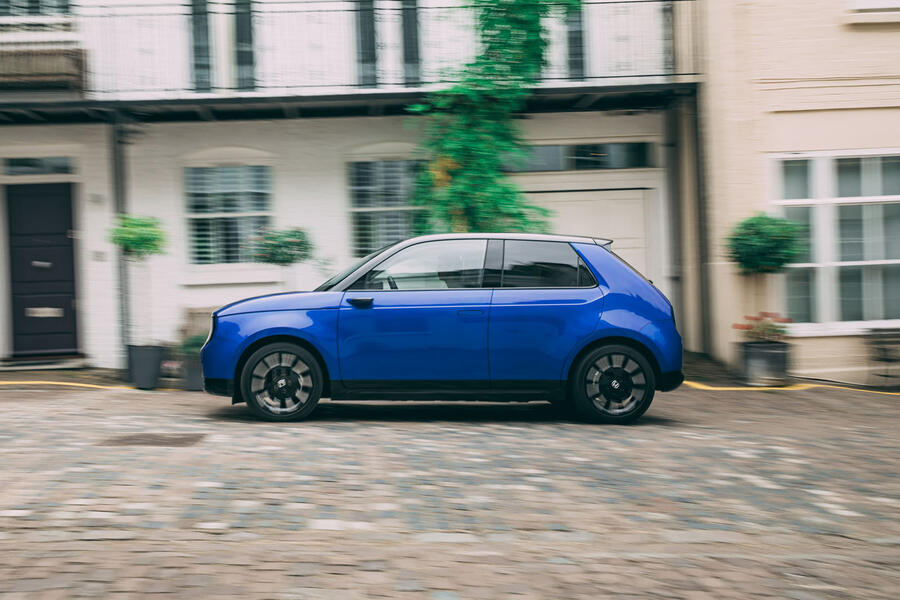The E, then. It’s more than just a nice piece of design. You’ve read plenty on it this year already in Autocar, most recently its three-and-a-half-star road test rating. Such a rating might be disappointing to Honda, but its range/price Venn diagram performance simply can’t be ignored against cars with the quality of the e-208, and the road test makes no allowance for charm. But charm is a worthy commodity in a long-term test such as this one. This is where we’ll find out just how easy it is to overlook the E’s objective shortcomings and really celebrate so much of what makes it such an interesting and desirable car.
As a quick recap, it’s the first electric Honda sold in Europe and is built on a bespoke architecture. There are just two versions offered: a standard, more efficiency-focused model with 134bhp (badged simply the E) and this more powerful, 152bhp Advance version, which is also much better equipped. Both models are rear-wheel drive and use the same 35.5kWh battery, with the regular version having an official range of 136 miles, while our model, on larger wheels and less economy-focused tyres, records 125 miles. In our road test, the real-world range came in at around 110 miles.
Given that the range of the entry-level model is hardly stellar anyway, the E’s appeal really lies in the Advance, which costs £2500 more than the regular version but comes with a significant uplift in specification. Standard kit includes the choice of 16in or 17in wheels, a premium sound system (which really does have a fantastic sound quality) and a heated windscreen, which has become an essential option for those freezing winter months.
Rarely do you sit inside a car these days and really take a moment to soak in your surroundings, but you do in the E. I haven’t been this taken aback by an interior since the BMW i3. The E has a similar ambience, mixing the right amount of technology with interesting, unusual materials and a real sense of space. The car may look small from the outside, but it feels big inside, and its design is the very definition of a breath of fresh air.

Ambience appreciated, it’s time for the pre-flight checks of getting the seating position right (this is an easy car in which to get comfortable) and adjusting your mirrors. And if you haven’t already, you then notice the E’s party trick of having cameras in place of conventional door mirrors, displaying images on screens at the extremities of the dashboard at the base of the A-pillars. You’ll love them or you’ll hate them (detecting a theme here?), but you’ll definitely take more than a few journeys to get used to them. If and when you do, you’ll appreciate the wider field of vision, improved visibility in low light and the handy green guidelines that appear when it’s safe to change lanes. There’s a digital rear-view mirror in the Advance, too; it’s a bit easier to get used to and similarly boosts low-light performance.





Join the debate
Add your comment